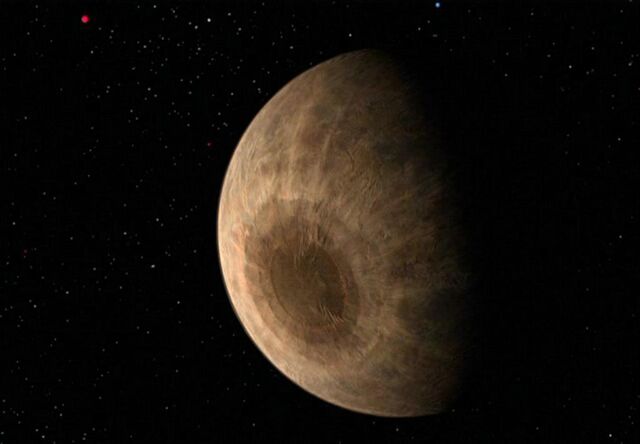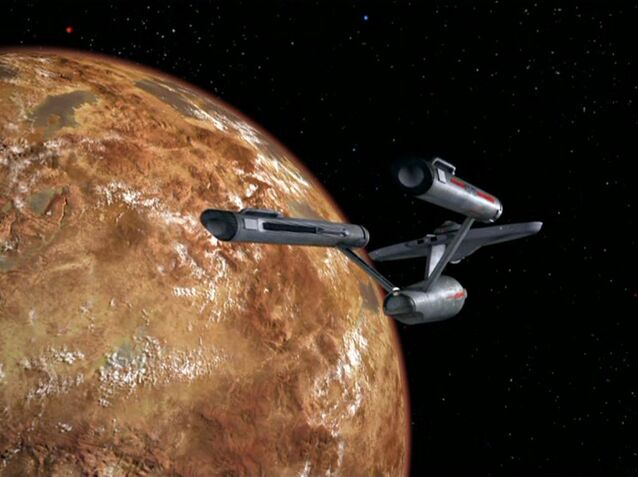- 384
- 119
Do they stop weapons?ByAsura said:Ok. I'll remove the deflector thing, but I'm still keeping the energy fields.
Follow along with the video below to see how to install our site as a web app on your home screen.
Note: This feature may not be available in some browsers.
Do they stop weapons?ByAsura said:Ok. I'll remove the deflector thing, but I'm still keeping the energy fields.
When was this shown for the N-X class?ByAsura said:Yes, and physical strikes.
Alright.ByAsura said:When Malcolm first created the energy fields to stop the creature from entering the cargo bay. Trip also set up forcefields to trap possible debris from a Xindi weapon.
That's easily too high for the NCC-1701, which is why I contested it in the first place. That would put it above Enterprise-D's Neutron Star feat.ByAsura said:I'm bumping this because you didn't really adress the point about the calc being Small Planet level.
ByAsura said:That's why I'm arguing the feat should be removed.

http://www.projectrho.com/public_html/rocket/usefultables.phpByAsura said:First of all, you're completely wrong. I did not calc half the crust being torn off into space, I calculated half the atmosphere being plunged into high-orbit, which the episode says it did. Second of all, it created a massive crater and wiped away the entire surface. The wiki uses energy, not destructive capacity, so it's Small Planet level to tear an atmosphere into space.
You say this while using your visual estimation of the Enterprise's position as the focal point of your entire argument. The calculation I'm using is based on the fact that the planet's surface was - aside from the blast crater - largely intact, while the atmosphere was blown away. Your calculation would result in far, far, more damage being done than what's shown.ByAsura said:Fine, if it stays there, however, the exact calculation should be removed, as it relies on the same method of calculation I and the person who created it also used. We actually see it when the ship leaves, and it's not much lower at around 5000 kilometers. I did not inflate it using visuals (...)
A Moon Level explosion on the surface would still blast a chunk of the planet's solid mass into orbit, even at the low end. There's also the fact that the Enterprise was not damaged, or even shake by the blast in the episode, so you can't say the atmosphere had enough energy to harm the ship at maximum orbit.ByAsura said:Spock actually implies the Enterprise moved to an even higher orbit, which would likely be High Earth Orbit given the context.
First of all, Kirk says they went to the planet's highest orbit. Second, it's fiction, not real life. The fact that the entire mantle isn't blown off doesn't prove your argument, especially since half the whole atmosphere is still gone. Third, the entire surface is gone. We see no bodies of water, continents, or cloud across the entire planet.ByAsura said:Actually, I did a calculation based on the feat.
The minimum speed to break orbit is 11.2 km/s, and the Earth's atmosphere is 5.148e+18 kg
(0.5)(5.148e+18)(11200^2) = 77.1707839388 Petatons
Since the results are the same, I assume this is where the calc got its value from.
However, I did a calc here that uses the speed from the Enterprise's orbital position. I got 6.36627759053 Zettatons, thousands of times higher, and well into Small Planet level.
I know that. Your calculation is saying that a blast that can throw continents into orbit is what's needed to throw air into orbit.ByAsura said:My calc is a lot lower, as I've explained, but I feel this points should be adressed. I already adressed this point. The calculation uses kinetic energy, and the atmosphere 5.148e+18 kilograms on average, even inspite of being "merely air".
ByAsura said:First of all, Kirk says they went to the planet's highest orbit. Second, it's fiction, not real life. The fact that the entire mantle isn't blown off doesn't prove your argument, especially since half the whole atmosphere is still gone. Third, the entire surface is gone. We see no bodies of water, continents, or cloud across the entire planet.

The scene cuts directly from the explosion on the surface to the Enterprise in orbit as the transporter retrieves Kirk and Garrovick, and the Enterprise is not shaking. At all. EDIT: My mistake: seconds afterwards, Enterprise rocks twice, but without the force necessary to even throw standing, unrestrained people off their feet. That still won't get you results anywhere near the destruction of a moon.ByAsura said:That's a lie. It was shaken from that position, quite heavily in fact. The Enterprise wouldn't have taken anywhere near the full explosion, as explosions are omnidirectional, and the ship has billions less surface area than a planet's surface, let alone the area of its highest orbit.
It's not "more likely". It literally is Multi-Continent Level.ByAsura said:Also, you seem to ignore that my calc is more likely Multi-Continent level now.
The water is gone, you mean. The planet's surface is still intact. Continents float on top of the mantle, so if the continents were gone, there'd be a floating ball of magma in space.ByAsura said:Yes, and that's based on the speed at which it is done.
That's irrelevant, both the water and continents are clearly gone.
I had corrected that statement just before you posted this comment. It's still nowhere near moon level: a moon level blast from there would destroy the Enterprise.ByAsura said:Yes it does. 20 seconds after the blast
I barely have to think about it. The bomb blew away air and water (the bodies of water being much smaller and more shallow than Earth's), leaving the rocky surface largely intact. A Multi-Continent Level blast will do that.ByAsura said:I'm talking about just my calc, not what you think the feat is.
Just FYI, "Enterprise NCC-1701-E " is just an Alt account of Supreme-Emperor-Over from the previous threads I've been in. I recognize his scattershot style and tendency to delete his own comments.ByAsura said:This is in response to the deleted comment because I can't really understand this one, no offense.
In real life, antimatter is that powerful, but this is fiction, where antimatter-based photon torpedoes comonly create explosions powerful enough to be seen from space. Also, what makes more sense; an inconsistent, offhand statement that the Enterprise can produce a certain amount of energy (such as 40 gigawatts), or more consistent statements and feats where they move small moons, tectonic plates, stellar fragments, destroy planetary surfaces in hours, etc. In fact, even the energy statements sometimes point to it being higher, like an 90 isoton explosion creating an explosion with a radius of 800 kilometers.
In very, very early DS9, as in the first episode it's introduced, the Defiant is unable to keep itself from tearing apart when the ship's engines are tested at full due to being overgunned for its size. This problem is fixed in its second or third appearance after they overhaul its structural integrity field.
A torpedo would not have 1/360th of its regular yield, that would be the energy the target is hit by, assuming it doesn't have enough surface area. That shouldn't even downgrade the full yield of the torpedo.
I deleted that account but that is my deviantart username.So it is not a altered account but a new one. We need a USS Enterprise E Page and an NX01 Page so lets do that. Photon Torpedoes whould release afraction of thier potential not because of their lack of power but because their are aera of effct weapons and whould spreard out and lose thier punch even more so in a planetary or stellar grade environment. Second we haver possibly even high accounts of federation firepower that needs to be addressed. and Scimitar the Borg Dominion and the USS Vengeance all need thier pages. Phasers are likey in the single to triple diget teraton range per second per emitter likey high with the TNG DS0 VOY and the TNG Movies. Sorry for that long replay.Idazmi said:Just FYI, "Enterprise NCC-1701-E " is just an Alt account of Supreme-Emperor-Over from the previous threads I've been in. I recognize his scattershot style and tendency to delete his own comments.ByAsura said:This is in response to the deleted comment because I can't really understand this one, no offense.
In real life, antimatter is that powerful, but this is fiction, where antimatter-based photon torpedoes comonly create explosions powerful enough to be seen from space. Also, what makes more sense; an inconsistent, offhand statement that the Enterprise can produce a certain amount of energy (such as 40 gigawatts), or more consistent statements and feats where they move small moons, tectonic plates, stellar fragments, destroy planetary surfaces in hours, etc. In fact, even the energy statements sometimes point to it being higher, like an 90 isoton explosion creating an explosion with a radius of 800 kilometers.
In very, very early DS9, as in the first episode it's introduced, the Defiant is unable to keep itself from tearing apart when the ship's engines are tested at full due to being overgunned for its size. This problem is fixed in its second or third appearance after they overhaul its structural integrity field.
A torpedo would not have 1/360th of its regular yield, that would be the energy the target is hit by, assuming it doesn't have enough surface area. That shouldn't even downgrade the full yield of the torpedo.